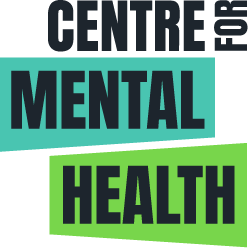By Dr Amy Pollard
What should mental health, autism and learning disability services in England look like in ten years’ time?
This was the question that Andy Bell and I were tasked with asking on behalf of NHS Confederation earlier this year. We asked a whole range of people – people with personal and professional expertise from across mental health, autism and learning disability services, who provide services, manage them and use them personally. Our task was to draw these perspectives together, alongside a desk review and case studies, into a vision for what services should look like in 2032 – and what we need to get there.
If you ask lots of different people a question like this, you might expect to get lots of different answers. There was indeed diversity in the responses we got, with variation in terms of the issues that people prioritised and, frankly, how despairing they were about the current state of play. But it was striking how coherently their perspectives fitted together. There was total agreement that things need to change. There was also a remarkably cohesive view of the direction that services need to go in – a vision of services that are proactive, holistic and equitable.
Digesting everything that we’d heard, we identified ten key components of a 2032 vision:
- Prevention: In 2032, greater effort will be made to protect and promote our mental health throughout every stage of life and to ensure autistic people and people with learning disabilities are properly supported to have fulfilling and independent lives. Locally and nationally, government and public services will take a systematic ‘population health’ approach to reducing the social and economic risk factors for poor mental health and boosting protective factors in individuals, families and communities.
- Early intervention: In 2032, services will not wait until someone is in crisis to offer help. Instead, early intervention will be the norm, with support front-loaded at an early stage to prevent more serious difficulties developing later on. Services will meet people where they are at, including online, at school, and in community spaces where they feel comfortable.
- Access to quality, compassionate care: In 2032, there will be no wrong door for anyone seeking support for mental health, autism and learning disability needs. People will be able to present at any point in the system – from pharmacies, advisory services and community groups to education, social services, the criminal justice system and primary care – and get the right support.
- Seeing the bigger picture: In 2032, mental health, autism and learning disability services will see the big picture as they support people to live their lives. People will get support with what matters most to them and services will help people with money, work and housing – with a package of support that is not limited to ‘health care’ per se.
- Whole person care: In 2032, services will support people with their physical and mental health and social needs together, and treat them as a whole person, mindful and respectful of their needs, assets, wishes and goals.
- Equality focus: In 2032, mental health, autism and learning disability services will be proactive in addressing structural inequalities and injustices. They will understand and challenge the intersecting inequalities that underpin the unequal risks of poor wellbeing and the subsequent inequities in access to support, experiences of services and outcomes achieved.
- Co-production: By 2032, there will have been a shift in the power imbalance between people who use mental health, autism and learning disability services and the organisations that provide them. Coproduction as an equal partnership will be the norm in the design, development and delivery of services.
- Autonomy, human rights and community support: In 2032, service users will be reaping the benefits of a major investment in community support. As changes to the Mental Health Act will have channelled investment away from institutional and inpatient services, comprehensive support in the community will have risen up to meet people’s needs.
- A stronger workforce: In 2032, there is a thriving workforce of clinicians, mental health professionals, allied professions, multi-disciplinary teams and diverse experts. Resources have been put in place to buy enough of people’s time and recruit those with the requisite skill levels. Coherent workforce planning has secured this capacity for the long term.
- Outcomes that matter: In 2032, services at all levels will be holding the outcomes that matter to service users as their lodestar. They will be able to measure these outcomes and be held to account for them. No longer will the system be driven by the outputs that matter to institutions, rather than the outcomes that matter to people.
If mental health, autism and learning disability services looked like this, as in really looked like this, life would be transformed for millions of people across England. It is thoroughly possible that they could – and we know this because every element of the vision is already a reality somewhere in England, right now. Across the country, from Sheffield to Somerset, Liverpool to London, we found examples of services that demonstrate what this vision already looks like in practice. If you’re lucky enough to live near them, you won’t have to wait ten years – the future is already here! At least in part.
If mental health, autism and learning disability services looked like this, as in really looked like this, life would be transformed for millions of people across England
To move from a position where we have pockets of inspiring practice to stellar services everywhere, three things will be required:
- Sustained and sufficient investment, to expand services meet increased needs but also to have the stability to innovate and transform what they offer, rather than having to respond to crisis levels of demand and acuity, and to replace outdated facilities.
- Effective long-term workforce development and planning, both to ensure that enough people are working in mental health, autism and learning disability services and to diversify the workforce and locate support where it is most needed.
- A deep commitment to large-scale reform, innovation and change, starting with reform of the Mental Health Act and transforming the nature of what is offered so that people get access to services they trust, that meet their needs and that treat them equitably.
Readers will have their own views about how likely it is that these three enablers will be put in place, in sufficient strength and scale, to transform mental health, autism and learning disability services in England over the next ten years. It’s easy to be cynical. However, the context of the sector is shifting. During the duration of this short project, we’ve seen three different Prime Ministers. One thing that’s guaranteed is that (one way or another) the next ten years will be a period of change.
It will include opportunities to move towards the vision. Only by holding the vision in mind will we recognise and notice them. Some of these opportunities might feel very modest – but it’s crucial to remember that we’re not playing a zero-sum game. It’s not all or nothing, and no step is too small to make a difference to millions of people with mental health difficulties, autistic people, and people with learning disabilities. Indeed, when we spoke to people with lived experience and their carers about the change they wanted to see, it was often the small things that meant the most.
no step is too small to make a difference to millions of people with mental health difficulties, autistic people, and people with learning disabilities
It’s understandable that people sometimes feel depressed about the prospects of reforming these services. There is a lot that needs to change, and the task can feel overwhelming. If you’re in this kind of headspace, reading an aspirational vision could feel like the policy version of flicking through Instagram – an unattainable image which makes things feel worse by comparison.
Luckily, however, people in the mental health, autism and learning disability space know about dealing with depression. One of my own favourite techniques for tackling it is the mood diary. Here, you pay close attention to your mood and take notes about it each day. Almost always, over time, you will notice shifts of one kind or another. The closer attention you pay, the easier it becomes to figure out what helps. Often, there’s more change going on than you first thought.
If we pay close attention, as a sector, we will always find opportunities to move towards proactive, holistic and equitable services. Whatever obstacles and constraints we also face, these are part of our work every day. Sometimes we’ll have opportunities in abundance, and sometimes we’ll have only one or two – but they can all make a difference to real people’s lives. We don’t have to wait for the wind to change; and we don’t have to wait until 2032. We can start building better services today.





